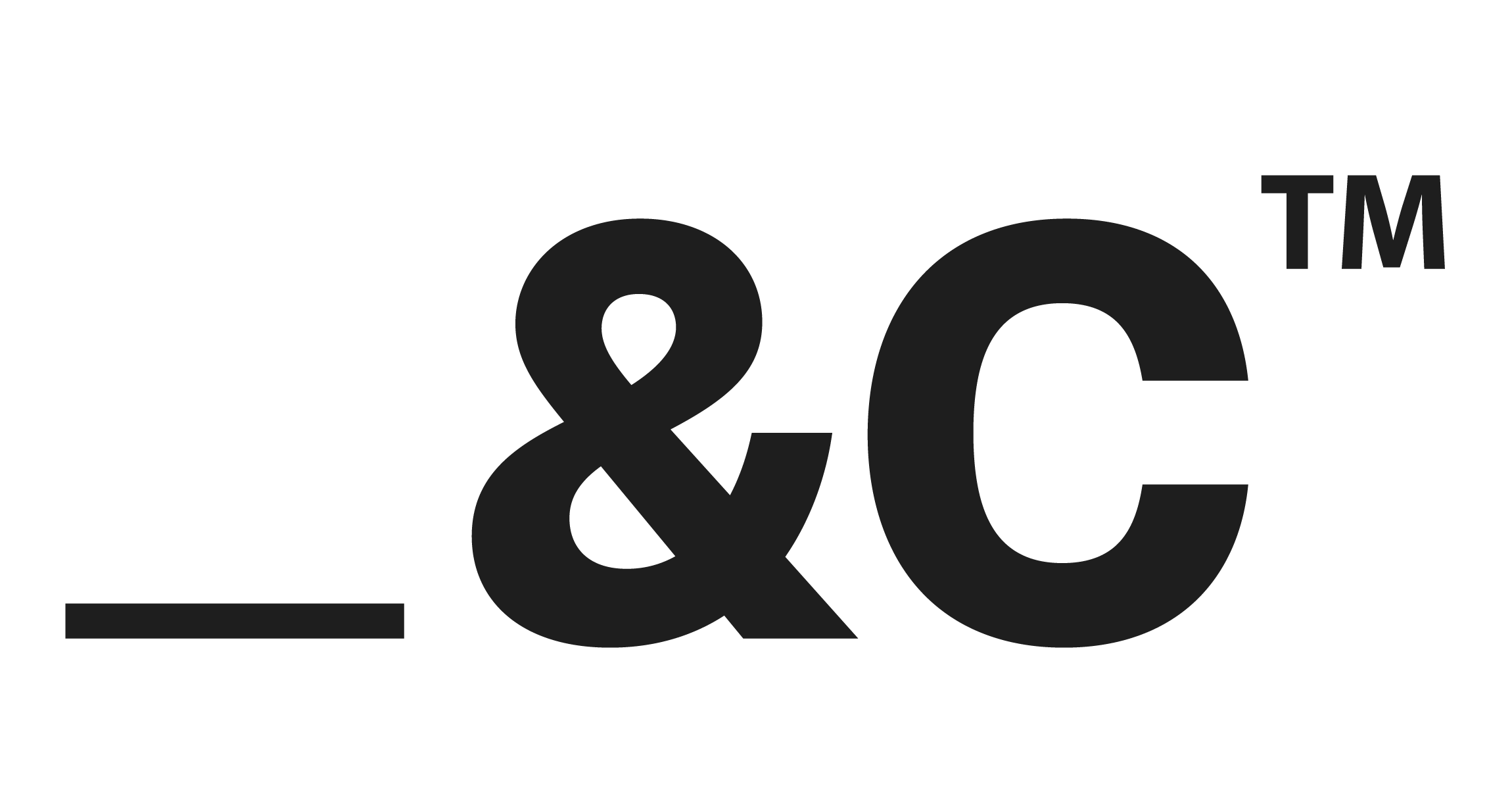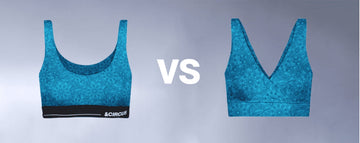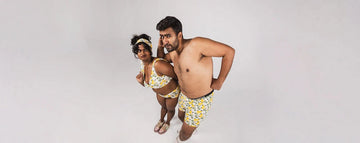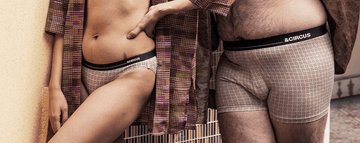Quick Listen:
Step into any shopping center, and the mannequins often project a singular vision of beauty sleek, standardized, and frequently unattainable. Yet, a transformation is underway. The fashion industry, once notorious for its rigid ideals, is being reshaped by brands like Tailor and Circus, whose inclusive innerwear signals a broader shift. This movement transcends merely expanding size ranges; it's about dismantling entrenched norms and championing a future where every body is celebrated.
The body-positive movement has surged, driven by a societal push for inclusivity. On social media, #BodyPositivity has amassed 43 billion views on TikTok and over 12 million Instagram posts. These figures reflect a collective demand for representation. With the average American woman now wearing larger sizes, the industry faces a market too significant to overlook. The global plus-size clothing market, valued at $579.8 billion in 2023, is forecasted to reach $964.9 billion by 2033, growing at a 5.3% compound annual growth rate (CAGR).
The Drive for Inclusivity
Body positivity, while not novel, has gained unprecedented mainstream traction. Since the #BodyPositivity hashtag emerged in 2012, conversations on platforms like Instagram and Facebook have spiked by 43% annually. This isn't mere digital chatter it's redefining what consumers expect. Shoppers demand brands that mirror their lived experiences, not polished illusions. North America led the plus-size clothing market in 2023 with a 43.97% revenue share, with the U.S. contributing 82% of that. Women's clothing accounted for 52.20% of the market, underscoring a robust demand.
Brands are adapting, though progress is uneven. Casual wear, particularly tees and t-shirts, is the fastest-growing category, meeting the call for stylish, practical options. Tailor and Circus, an Indian brand, excels in this space with sustainable innerwear crafted for diverse body types. Their commitment to comfort, inclusivity, and eco-friendly materials resonates with consumers seeking value-aligned brands. They're joined by pioneers like Aerie, whose #AerieReal campaign rejected retouching to feature diverse models, setting an industry standard. Savage X Fenty and ThirdLove similarly prioritize fit and representation, moving beyond outdated archetypes.
However, setbacks persist. The pandemic disrupted gains, notably when Ascena Retail, owner of Lane Bryant (sizes 12-28), filed for bankruptcy in 2020, planning to shutter over 150 stores. Now sold to Premium Apparel, an affiliate of Sycamore Partners, Lane Bryant's struggles highlight broader challenges. The elevated costs of producing plus-size garments, combined with industry-wide budget cuts, have curtailed investment in inclusive offerings. Still, the market's potential is clear: the global plus-size women's clothing market is projected to climb from $306.66 billion in 2024 to $532.79 billion by 2034, with a 5.68% CAGR, propelled by body positivity and e-commerce growth.
Tangible Impact
Tailor and Circus distinguishes itself not only through its size inclusivity but also its environmental ethos, a standout in a fast-fashion-dominated landscape. Their innerwear, made from sustainable fabrics, proves that inclusivity and eco-consciousness can align. Aerie's #AerieReal campaign serves as a powerful example of impact. By showcasing unretouched models with diverse body types, disabilities, and skin conditions, Aerie didn't merely sell products it ignited a cultural dialogue. The campaign's success, reflected in soaring sales, underscores the power of authenticity. Savage X Fenty, led by Rihanna, has redefined lingerie with runway shows celebrating all shapes and shades, cultivating a devoted, diverse following.
Social media amplifies these efforts while enforcing accountability. Influencers and activists on TikTok and Instagram don't just endorse brands they scrutinize them. Performative sizing or lackluster diversity in campaigns triggers swift criticism, compelling brands to prioritize genuine fit diversity and representation over superficial gestures.
Persistent Hurdles
Resistance lingers. Traditional fashion houses, anchored in exclusivity, often balk at change. Producing plus-size clothing requires more fabric and specialized patterns, raising costs that deter investment, particularly in a post-pandemic economy. Some brands, facing these financial realities, view inclusivity as a gamble rather than a necessity, missing out on a growing market.
Authenticity remains a sticking point. Performative inclusivity such as featuring a lone plus-size model in an otherwise uniform campaign fools few. Consumers quickly call out tokenism, demanding substantive change. Even well-intentioned brands like Tailor and Circus face challenges, balancing expanded size ranges with sustainable practices while keeping prices affordable.
The tension between profit and purpose is another hurdle. Size-inclusive lines demand significant investment in design, research, and supply chains. For smaller brands, this can be intimidating. Yet, those who persevere, like Tailor and Circus, often reap rewards in customer loyalty and market share, proving that inclusivity is both a moral and business imperative.
Expanding Opportunities
The plus-size clothing market, valued at $114.1 billion in 2023, is expected to reach $178.2 billion by 2032, growing at a 5.1% CAGR. This isn't a niche it's a transformative force. Brands embracing inclusivity access a vast, underserved demographic, spanning teens to women in their 50s. The 16-59 age group led the market in 2024, signaling a broad, engaged consumer base.
Inclusivity fosters trust. When brands like Tailor and Circus champion diverse bodies and sustainable practices, they forge emotional bonds with customers, driving positive reviews and organic advocacy. Aerie's unretouched campaigns didn't just boost revenue they built a community. This social capital is critical in an era where authenticity is rewarded and inauthenticity is penalized.
The greater opportunity lies in redefining beauty standards. Brands can lead the charge in dismantling harmful norms, using diverse models and prioritizing fit over idealized aesthetics. In doing so, they're not just selling fashion they're shaping a more inclusive culture.
The Road Forward
The future of body-positive fashion is promising but requires unwavering commitment. Industry experts foresee technologies like AI-driven fitting and 3D printing enabling customized solutions at scale. The plus-size women's clothing market, projected to grow from $308.0 billion in 2024 to $444.4 billion by 2033 at a 4.2% CAGR, highlights the stakes.
For brands, the directive is unmistakable: inclusivity is not optional. Tailor and Circus and its counterparts demonstrate the potential when purpose aligns with profit. But adding a few sizes or a diverse model falls short. Authentic change demands a holistic rethink of design, supply chains, and narratives. As the industry evolves, success will belong to brands that recognize every body as worthy of celebration, paving the way for a fashion landscape that truly reflects the world it serves.
Disclaimer: The above helpful resources content contains personal opinions and experiences. The information provided is for general knowledge and does not constitute professional advice.
You may also be interested in: Role of the Fashion Industry in Shaping Body Image
Uncomfortable underwear shouldn't steal your confidence. At Andcircus, we craft ultra-soft, sustainable Lenzing Modal Micro innerwear for every body, XS to 5XL. From briefs to bras, our custom packs fit you perfectly. Shop risk-free with our 100% satisfaction guarantee and embrace comfort that includes everyone. #LoveEveryBody. Shop Now!







































